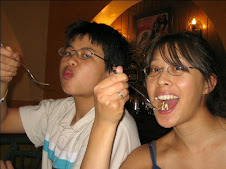Jambalya, My Way
Makes 4 to 6 servings
WHAT YOU'LL NEED
- 6 tablespoons butter
- 1/2 cup chopped green onions
- 1/2 cup chopped yellow onions
- 1 large green bell pepper, seeded and julienne
- 1 cup coarsely chopped celery
- 1 teaspoon minced garlic
- 1/2 pound medium shrimp, peeled and deveined
- 1/2 pound cubed boiled ham
- 1/2 pound smoked sausage, cut crosswise into 1/4-inch-thick slices (optional)
- 1 (16-ounce) can whole tomatoes, crushed with the can juices
- 1 cup chicken broth
- Salt and cayenne
- 2 bay leaves
- 1 cup long-grain rice, uncooked
- Hot sauce
WHAT TO DO
- Heat butter in a large, heavy pot over medium heat
- Add onions, bell peppers, celery and garlic
- Cook, stirring, until they are soft and lightly golden, 6 to 8 minutes.
- If you're including them: Add shrimp and ham, and sausage
- Cook for 2 to 3 minutes, or until shrimp turn pink
- Stir in tomatoes and chicken broth
- Season to taste with salt and cayenne
- Add bay leaves and rice
- Cover and reduce heat to medium-low
- Cook until rice is tender and all liquid is absorbed, about 25 minutes.
- Remove the bay leaves and serve
Don't forget to pass the hot sauce!




